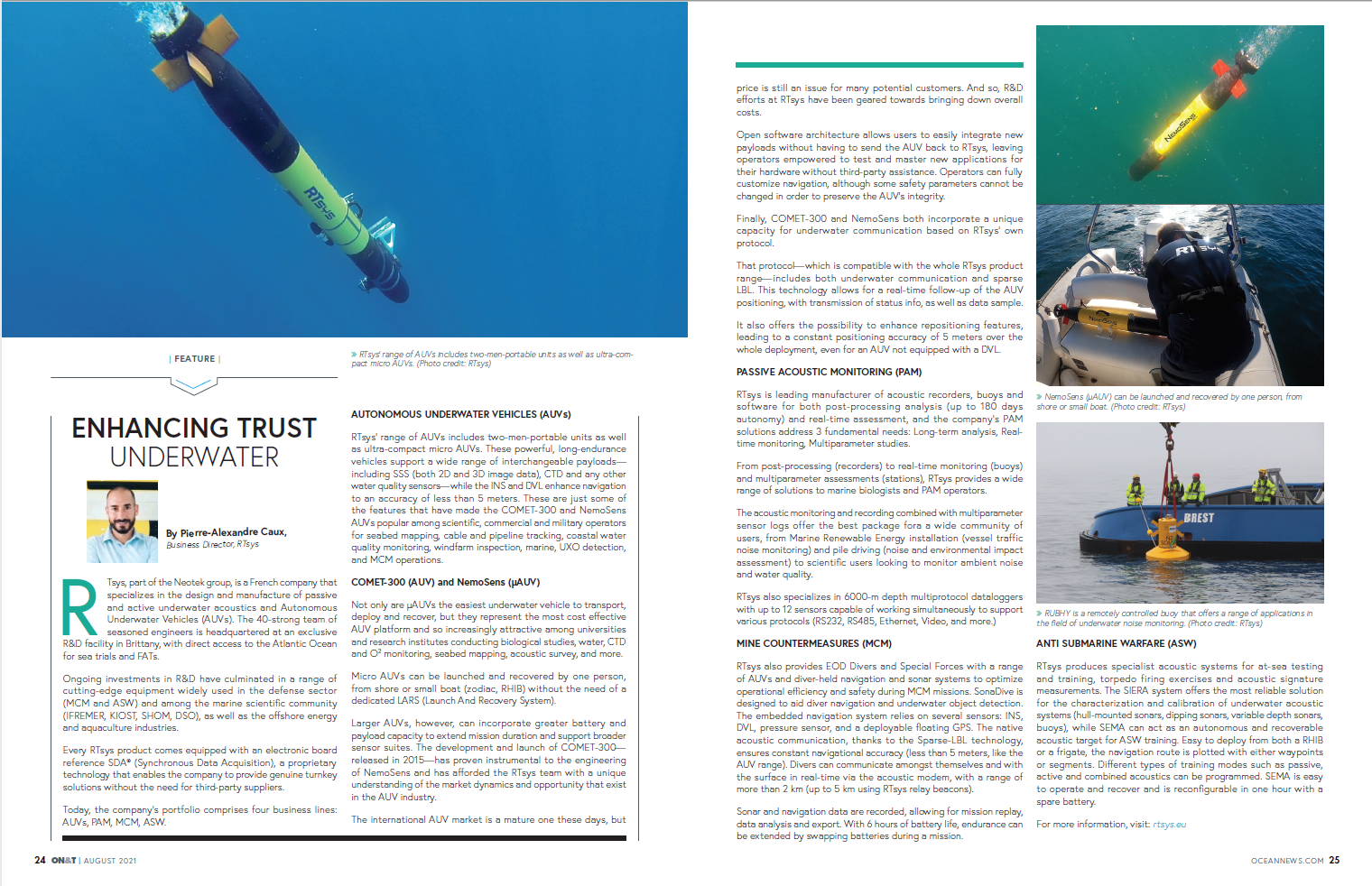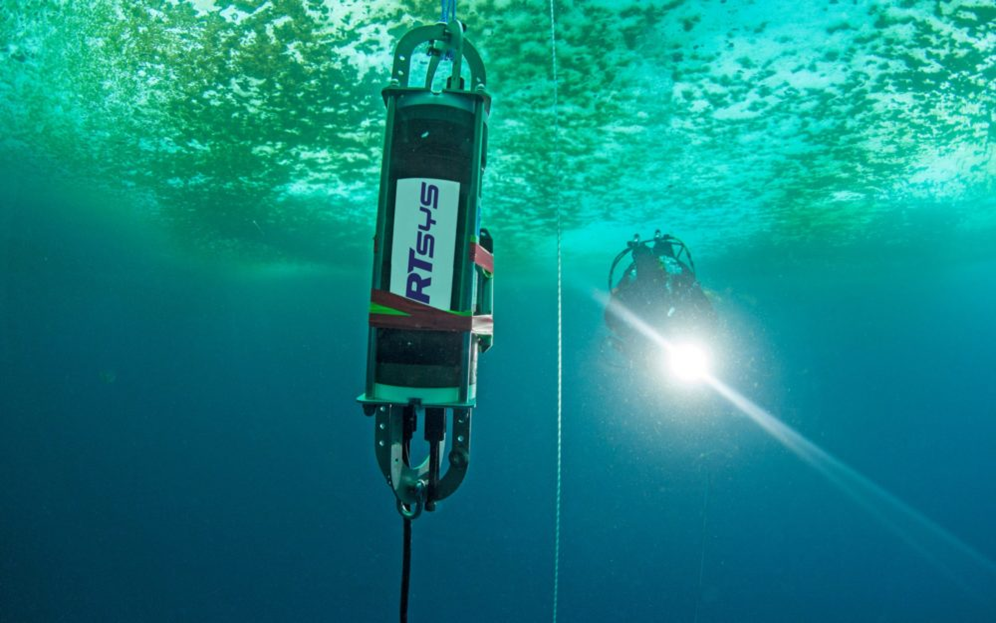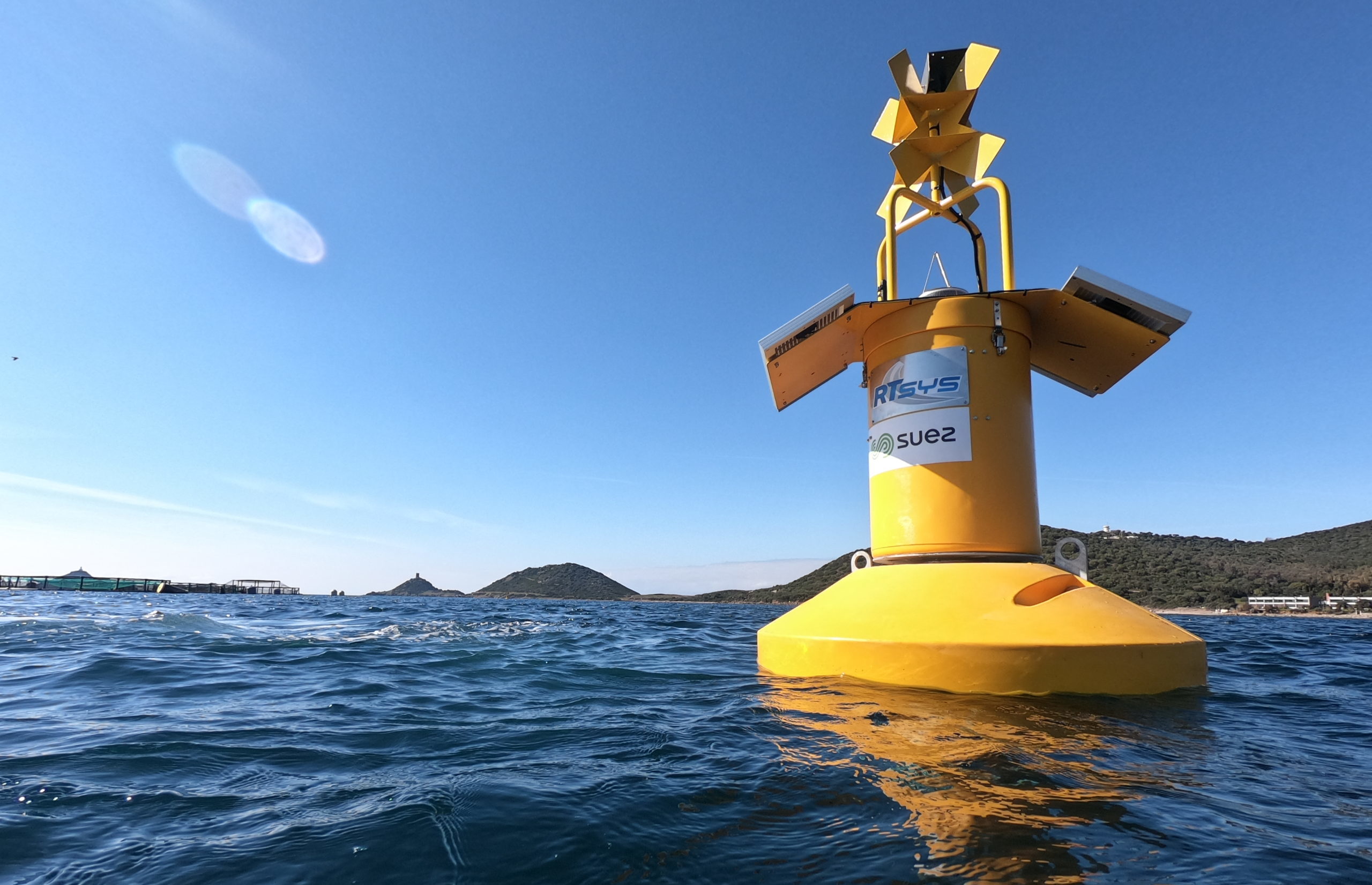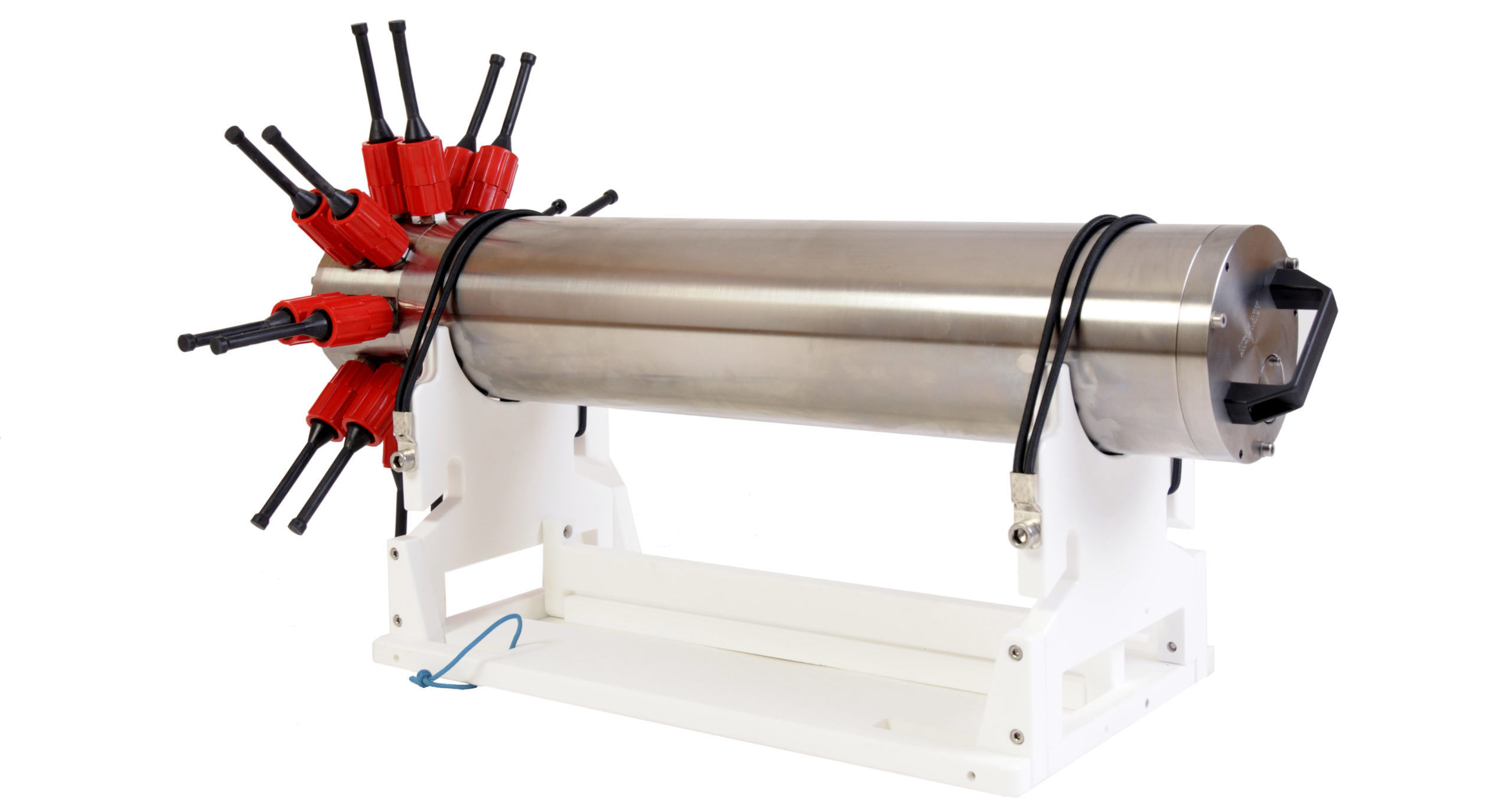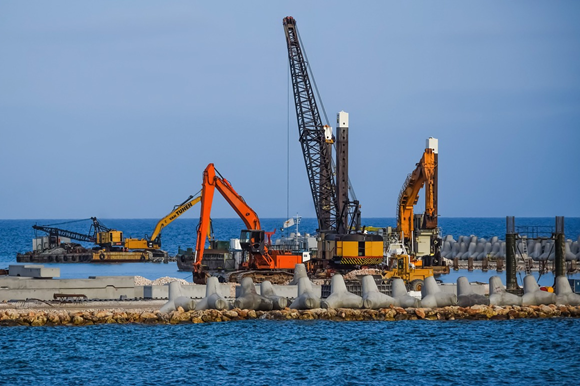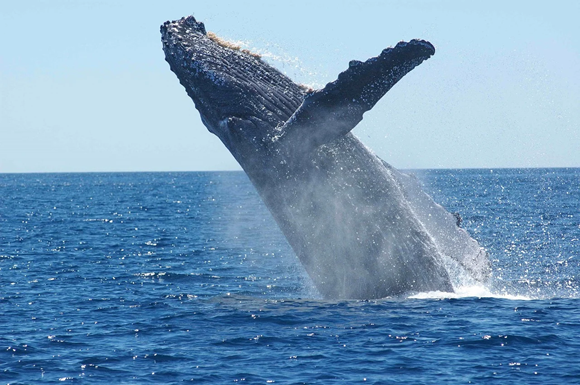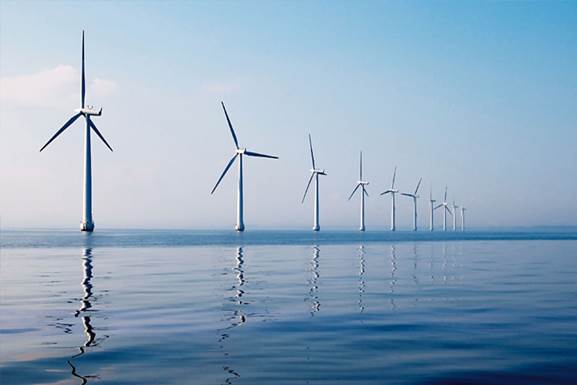Passive Acoustic Monitoring (PAM)
Passive Acoustic Monitoring (PAM) obtains valuable data on underwater areas, either by real-time assessment or post-processing analysis.
We also handle more specific needs for multiparameter monitoring.
From post-processing (recorders) to real-time
monitoring (buoys) and multiparameter
assessments (stations), we provide a wide range of
solutions for marine biologists and PAM operators.
Long-term post-processing
Real-time monitoring
Multiparameter studies
Passive Acoustic Monitoring






RTSYS offers field-proven solutions which achivements can be watched or read down below
Take a closer look at our videos and pictures below. You can also keep up to speed with our latest innovations on our social media channels!
Characterization of underwater operational sound of a tidal stream turbine
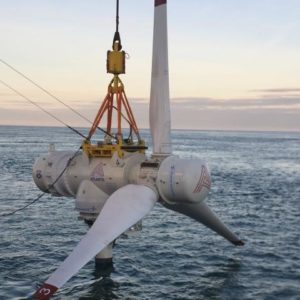 underwater sound emitted during the operation of the Atlantis AR1500 turbine, a 1.5 MW three bladed horizontal axis tidal-stream turbine, was measured in the Pentland Firth, Scotland. Most sound was concentrated in the lower frequencies, ranging from 50 to 1000 Hz. Within 20 m of the turbine, third-octave band sound pressure levels were elevated by up to 40 dB relative to ambient conditions. In comparison, ambient noise at these frequencies fluctuated by about 5–10 dB between different tidal states. At the maximum recording distance of 2300 m from the turbine, median sound pressure levels when the turbine was operational were still over 5 dB higher than ambient noise levels alone. A higher frequency, tonal signal was observed at 20,000 Hz. This signal component appeared at a constant level whenever the turbine was operational and did not change with turbine rotation rate. It is most likely produced by the turbine’s generator. This study highlights the importance of empirical measurements of turbine underwater sound. It illustrates the utility and challenges of using drifting hydrophone systems to spatially map operational turbine signal levels with reduced flow noise artefacts when recording in high flow environments.
underwater sound emitted during the operation of the Atlantis AR1500 turbine, a 1.5 MW three bladed horizontal axis tidal-stream turbine, was measured in the Pentland Firth, Scotland. Most sound was concentrated in the lower frequencies, ranging from 50 to 1000 Hz. Within 20 m of the turbine, third-octave band sound pressure levels were elevated by up to 40 dB relative to ambient conditions. In comparison, ambient noise at these frequencies fluctuated by about 5–10 dB between different tidal states. At the maximum recording distance of 2300 m from the turbine, median sound pressure levels when the turbine was operational were still over 5 dB higher than ambient noise levels alone. A higher frequency, tonal signal was observed at 20,000 Hz. This signal component appeared at a constant level whenever the turbine was operational and did not change with turbine rotation rate. It is most likely produced by the turbine’s generator. This study highlights the importance of empirical measurements of turbine underwater sound. It illustrates the utility and challenges of using drifting hydrophone systems to spatially map operational turbine signal levels with reduced flow noise artefacts when recording in high flow environments.“Posidonia meadows calling”: a ubiquitous fish sound with monitoring potential
By Lucia di Iorio (Chorus Institute), Xavier Raick, Eric Parmentier (University of Liège), and Pierre Boissery (Agence de l’Eau Rhône-Méditerranée-Corse)
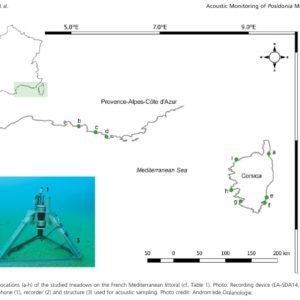 In the Mediterranean Sea, the seagrass Posidonia oceanica plays a key ecological role, and is protected by a range of legislation. Standard Posidonia monitoring programms generally focus on the plant at different spatial and short temporal
In the Mediterranean Sea, the seagrass Posidonia oceanica plays a key ecological role, and is protected by a range of legislation. Standard Posidonia monitoring programms generally focus on the plant at different spatial and short temporalAcoustic behaviours of large crustaceans in NE Atlantic coastal habitats
By Laura Coquereau (UBO), Laurent Chauvaud (CNRS), and Aurélie Jolivet (SOMME)

Mapping the diversity of spectral shapes discriminates between adjacent benthic biophonies
By Julie Lossent, Lucia Di Iorio (Chorus Institute), Cathy-Anna Valentini-Poirier and Pierre Boissery (Agence de l’Eau Rhône-Méditérranée-Corse)

Sound characterization of the European lobster Homarus gammarus (L.) in tanks
By Youenn Jézéquel (UBO), Julien Bonnel (WHOI), and Laurent Chauvaud (CNRS)
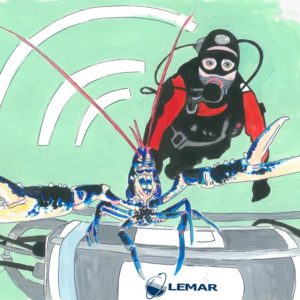
In this study, we characterized reverberation in tanks using an artificial sound source and examined the implications for bioacoustic studies using sounds emitted by the European lobster Homarus gammarus during feeding and in response to stress. Broadband and transient sounds commonly produced by crustaceans were severely impacted by reverberation such that their spectral characteristics and pulse width durations could not be assessed. In contrast, low-frequency
sounds could be characterized in tanks, but not their source level. Based on these observations,
we describe a simple methodology to identify which sound characteristics can be measured in tanks.
When feeding, the lobsters produced broadband and transient sounds called ‘rattles’, similar to sounds reported for tropical spiny lobsters Palinurus longipes and P. argus. When stressed, H. gammarus vibrated its carapace, producing a low-frequency sound analogous to the ‘buzzing’ sound of the American lobster H. americanus. The potential role of species-specific sound is discussed; however, although our observations represent the first bioacoustic characterization of H. gammarus, additional behavioural studies are necessary to understand their ecological meaning.
ON&T magazine
